Remember Gilmore Girls? In second grade, I was obsessed with that show, and recently I’ve been binge watching every single episode. If I picture Gilmore Girls, the first thing that pops into my mind is thin Lorelei Gilmore at Luke’s, stuffing her face with a burger and fries while sipping on a soda. But Lauren Graham, the actress that plays her, is quoted saying, “I’ve been on a diet for 35 years.”
As with Graham vs. Gilmore, appearance is far from reality when it comes to slender women posing as the face of fast food advertisements. Just take a look at this Wendy’s commercial. You might think that the thin woman portrayed is Wendy, when, in fact, the real Wendy is middle-aged and several sizes larger.
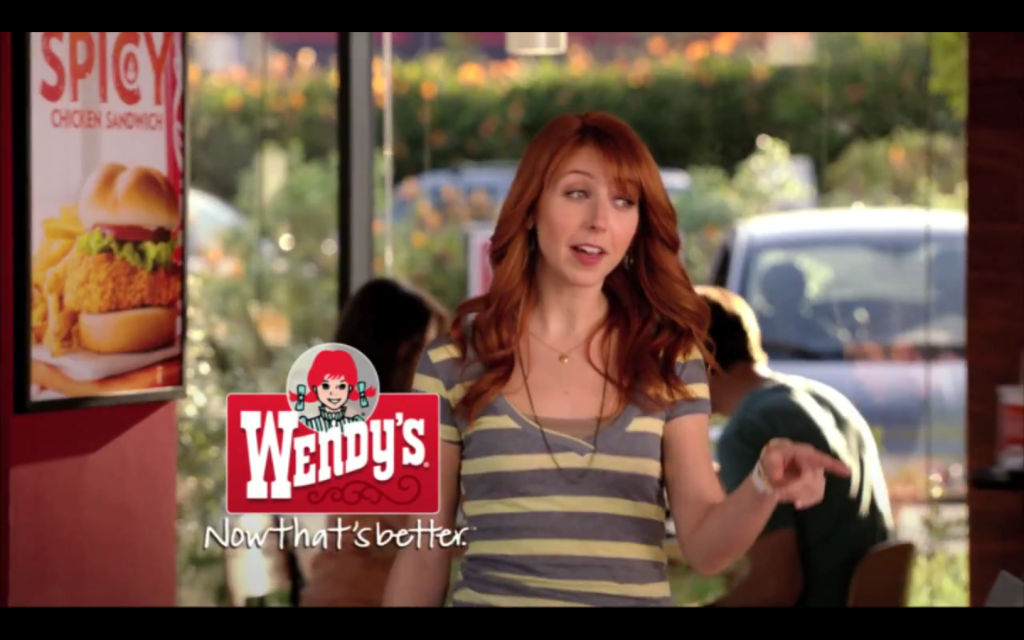
Photo courtesy of www.sellingeating.com
This type of advertising encourages unrealistic body expectations and unhealthy eating habits.
Here’s how:
1. TOFI

Photo courtesy of www.forbes.com
This acronym stands for “thin-outside-fat-inside” and describes lean-looking individuals who have a disproportionate amount of adipose tissue, or fat, stored in their abdomens. Individuals described as TOFI are at a higher risk of developing insulin resistance and Type II diabetes.
If we are expected to eat fast food and remain thin (aka look like Kate Upton in the above Carls Jr. ad), we may limit our food intake to compensate for the high caloric content of the food. Eating less “bad for you” food might leave you thin, but also at risk for a ton of health problems.
2. Obesity
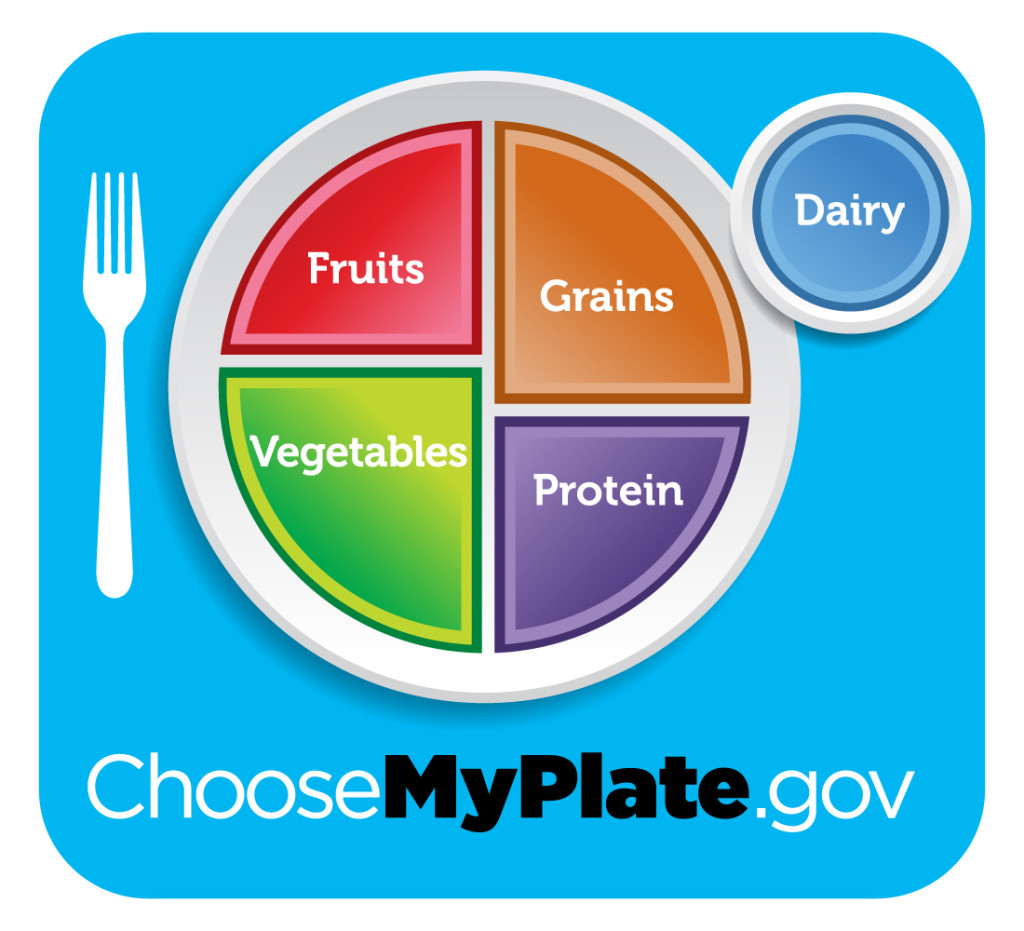
Photo courtesy of choosemyplate.gov
There is a prevalent lack of knowledge regarding healthy eating in America. My Plate, which has replaced the old food pyramid, is still unclear about what comprises a healthy, balanced meal, unless you have sufficient time to dig through the My Plate website. For example, BBQ chicken pizza with a side of fruit appears to fit My Plate’s proportions of carbs, dairy, protein and veggies, but few of us would consider this a totally healthy meal.
With slender women in fast food commercials so often, it’s easy to believe that eating fast food can’t be that bad. This misinformation promotes habitual consumption of unhealthy foods, contributing to obesity.
3. Disordered Eating
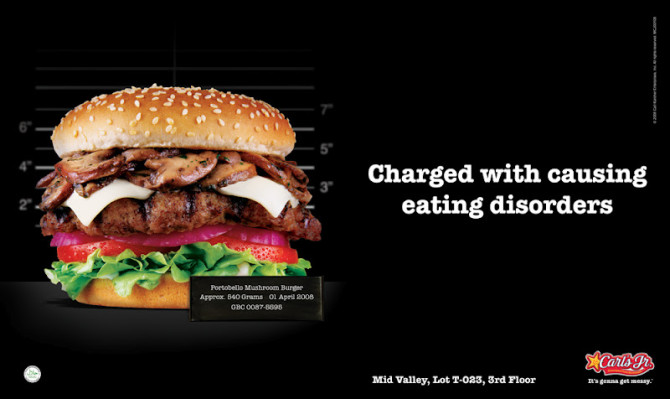
Photo courtesy of www.sabihafrin.wordpress.com
An unhealthy attitude toward eating and toward one’s body are risk factors for basically all eating disorders. However, the expectation to be thin while also eating fast food can especially increase the risk of developing bulimia nervosa or binge eating disorder.
4. Health Shaming
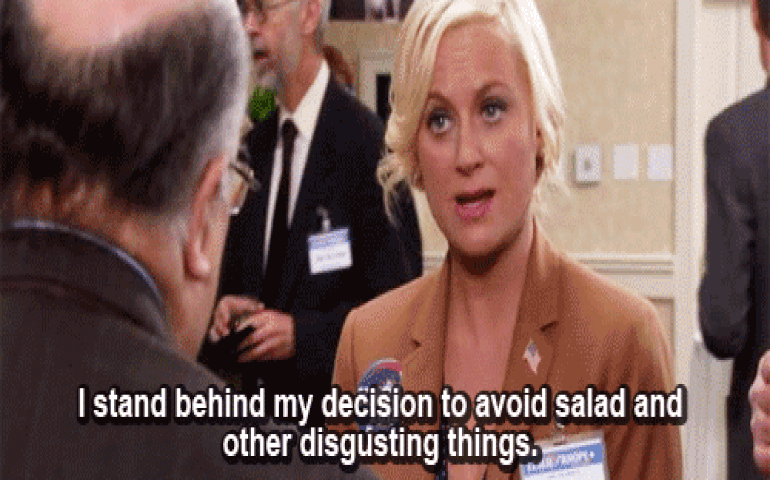
GIF courtesy of giphy.com
There has been an amazing push against fat shaming all over the media, helping women accept and love their bodies. However, recently, something called “health shaming” has also gained attention. Health shaming is judging a person for eating a salad when everyone else ordered a burger (“omg, she must think she’s fat, she must be afraid of getting fat,” etc).
Food shaming of any kind is harmful, whether it’s judgement for eating too healthily or too unhealthily. Ads that connect healthy-looking women with fast food unnecessarily promote health shaming, by saying that thin people can or should still order burgers and fries.
5. Sexualization of Women
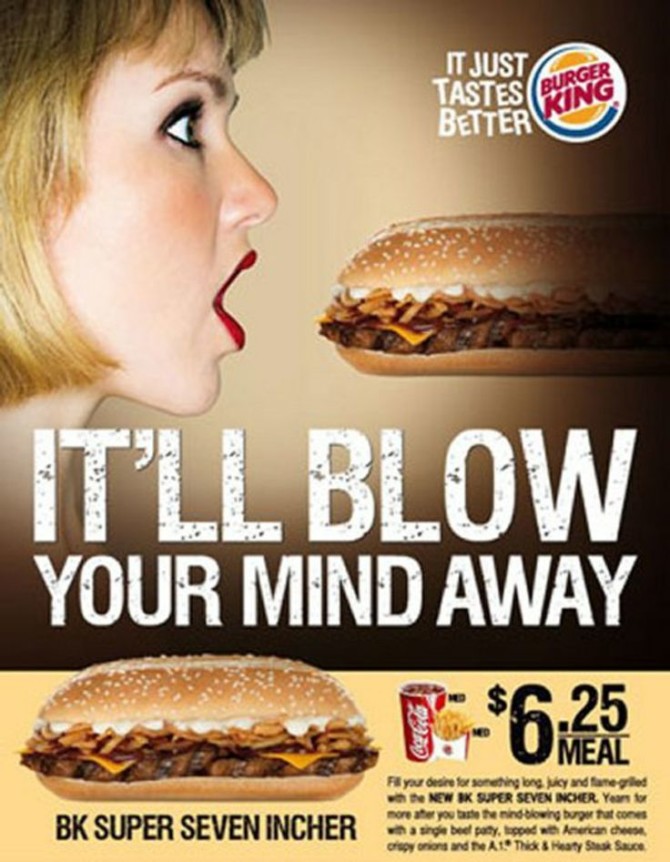
Photo courtesy of www.pinimg.com
The above ad was eventually removed after receiving criticism (perhaps it had to do with the obvious comparison to a blow job? We think yes).
It’s been scientifically proven that junk food creates chemical responses in our brains, which cause us to become addicted to the food. We crave the Big Mac, which is coupled with thin, attractive women on screens (aka using sex appeal to sell a burger). This blatant contradiction is promoting skinny women at the expense of reason and medical knowledge about what fast food can really do to your body.




